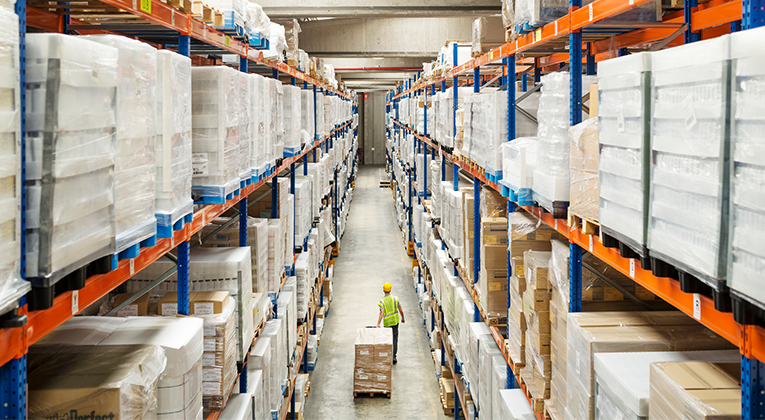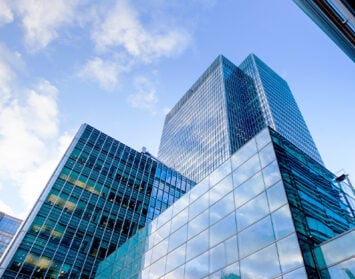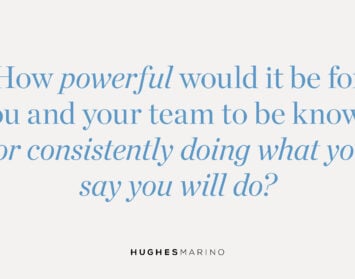By David Marino
While you can hardly open a business periodical without reading about the meltdown of office space in the United States, until recently, few are talking about the slide of industrial real estate.
But as a business owner or executive running a manufacturing, research or distribution company (or doing business with one), there’s a lot of good news on the horizon for you.
While in a supply and demand equilibrium pre-Covid, the 2020 to 2021 industrial real estate demand surge was driven by companies shortening up supply chains and e-commerce companies expanding to accommodate the spike in Covid-driven consumer online purchasing. This created a historic decline in industrial availability rates and a corresponding spike in rental rates as tenants competed for limited spaces.
Between mid-2020 and 2022, according to data from Costar, availability in most U.S. markets went down dramatically, and in the case of examples like Chicago, Atlanta and Cincinnati, availability dropped from approximately 10% to mid-single digits. This rapid availability decline triggered industrial rental rates to increase during the same period, rising in two years by 30% to 50% in major U.S. markets as tenants competed for suddenly limited space.
The shortages were particularly severe for larger companies seeking more space, and I saw many tenants forced to sign 10-year leases just to get to the front of the line and secure space. Strong credit helped, while those companies with lesser credit often settled for buildings in suboptimal locations.
Record Amount Of New Construction
To meet this demand, developers did what developers do; they quickly started building large projects as soon as they secured approvals, only to face delays from city building departments struggling with remote work inefficiencies and a surge in permit requests. This was compounded by shortages of construction materials.
Seeing no end in sight to the demand surge from 2020 to 2022, developers in 2023, and so far into 2024, completed 1.172 billion square feet of new industrial buildings, according to numbers from Costar; the same report shows that 57% of properties already built in 2024 are still vacant and for lease today.
Right now, Costar also reports another 318 million square feet of industrial space under construction, 52% of which is still available for lease, and all further flooding the market through 2025 as these new buildings are completed. Meanwhile, between 2026 and 2027, the construction loans on most of these new buildings are also coming due, whereby landlords with vacant buildings will find themselves handing the keys back to lenders in the event they cannot get permanent financing.
Record Amount Of Sublease Space
Simultaneously, from 2023 and rising into 2024, a glut of industrial sublease space flooded the market as consumers resumed their pre-Covid purchasing behavior and 3PLs and e-commerce companies were suddenly confronted with excess real estate capacity.
In turn, e-commerce companies began reducing their footprint, and other industrial companies started rationalizing their Covid expansions. Costar data shows that corporations have flooded the U.S. metro office markets with near-historic amounts of sublease space as employees have gone remote or hybrid, and companies need less office space as a result.
At the same time, for different reasons, Costar shows that U.S. industrial companies have dumped 231 million square feet of industrial space on the market for sublease, a high never seen before in commercial real estate history. In the U.S. today, there’s as much industrial space for sublease as there is office space—let that sink in.
Availability Rates Back To Pre-Covid Levels: Higher In Many Cases
Since 2023, industrial companies have slowed down their growth, with many putting the brakes on their expansions. The bottom line is that the combined effect of new construction and sublease supply, plus this decline in demand, have resulted in availability rates returning to, or even rising above, their pre-Covid levels in many major metro areas.
As derived from Costar at the time of this writing, the availability rates for key metro areas pre-Covid compared to today are as follows:
- 6.5% pre-Covid versus 13.4% today in the Southern California Inland Empire.
- 6.8% pre-Covid versus 12.1% today in the Denver metro area.
- 7% pre-Covid versus 10.1% today in Boston metro area.
- 6.8% pre-Covid versus 12.6% today in the Seattle metro area.
- 5.9% pre-Covid versus 8.7% today in Los Angeles County.
More Options Than Ever
The best news for business owners and management teams is that companies looking to lease industrial space in most U.S. markets have more choices than ever.
The supply of large buildings over 100,000 square feet existing and under construction is at a glut condition, with 136 options in the Southern California Inland Empire, 168 in the Dallas-Fort Worth metro and 59 in the Houston metro, according to Costar.
Many Rental Rates Still Stuck In The Past
One would think that with pre-Covid availability rates back, business owners signing leases would also see the return of pre-Covid pricing, but that hasn’t happened for the most part. The first reason is that commercial real estate markets are very sticky and have little short-term volatility, so price reductions lag increases in supply.
Secondly, landlords work collectively to hold the line on prices, anchoring off of each other and backstopped by the brokerage community, which represents these landlords and supports the pricing levels they are accustomed to achieving.
Lastly, lack of transparency in commercial leases often helps landlords and their brokers to maintain historically high asking prices, leaving business owners and management teams at a disadvantage in terms of information, leverage and representation.
Long Leases And Strategic Location Choices
A tenant renewing their lease at 5% below the asking price might feel they’ve secured a good deal, but we’ve been negotiating leases with the same landlord at 15% off, including generous free rent and substantial tenant improvement allowances. Landlords won’t offer these deals unless someone actively pushes for them.
With its complete lack of transparency, I find there is no more inefficient asset class and industry than commercial real estate leasing; it’s essentially the unregulated Wild West. With the industrial markets now in decline, we’ve entered a downward moving cycle, and I predict the market will be a strong tenants’ market for the next two to three years.
But business owners and management teams must go to market to find out what their real value is and engage independent representation that is willing to test this market to find out what tomorrow’s pricing is—not yesterday’s.
David Marino is senior executive managing partner of Hughes Marino, a global corporate real estate advisory firm that specializes in representing tenants and buyers. Contact David at 1-844-662-6635 or david@hughesmarino.com to learn more.











